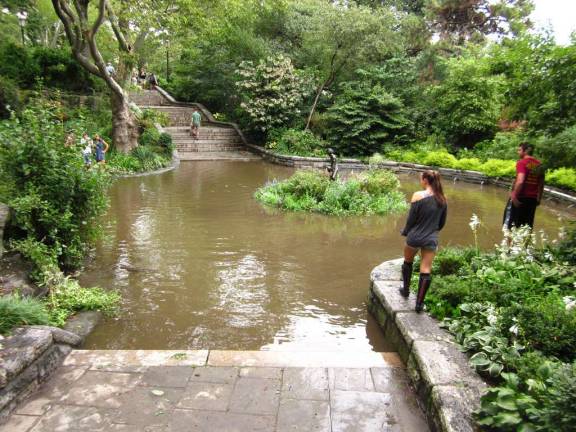New Flood Zones for Upper East Side

Maps to indicate evacuation centers just outside of flood zones
The beginning of summer doesn't just mean hot subways, open hydrants and ice cream trucks, it also means hurricane season in New York. And with Sandy a not-so-distant memory of devastation, New York is beginning to prepare for the next storm. The city has put in place new evacuation zones , dividing the city into more succinct zones of 1 to 6 instead of A,B and C, and created a flood resilience plan as part of its efforts to curtail the effects of climate change.
Officially, hurricane season in the Atlantic runs from June 1 to Nov. 30, according to the National Hurricane Center.
If the proposed zoning text amendment were passed, it would mean that the coastline of flood zone of New York would look pretty different. Among other items, the zoning text amendment would require new buildings in the flood zone to be to be built one or two feet higher than the latest Federal Emergency Management Agency (FEMA) flood elevation standards, but old buildings can stay the same. The FEMA maps have largely not been updated since 1983. In addition, levels below the flood zone can only be used for storage or parking garages. The point is to elevate all residential and commercial buildings so that water can flow underneath.
"The zoning text amendment is not to be confused with the new evacuation plan," said Melissa Cerezo, a representative from the Department of City Planning at a recent Community Board 8 meeting. "This text amendment is not temporary and it addresses our most urgent needs."
According to Cerezo, the affected area will be the "100-year flood zone," or the low-lying coastal areas that have a 1% chance of being flooded every year. For the Upper East Side, First and Second avenues above 90th Street. On the west side, upper midtown is in the flood zone up until 12th Avenue, but above 62nd Street is in the clear. The West Side Highway, however, is in the flood zone.
The Department of City Planning is trying to address many of the issues associated with the zoning text amendment, including putting in ramps, so that the buildings will be wheelchair accessible. In addition, the department also said that they are looking to change the streetscape so that the entire waterfront won't "look like its on stilts" or have unattractive blank walls, by adding screens or plantings.
As for the new City evacuation zones, the New York City Office of Emergency Management has laid out a new map that shows zones 1 to 6, and each zone will be evacuated or not depending on the severity of the storm surge. The flood map added 600,000 people to the new flood zone, which was last updated in 2003. Plus, the new evacuation maps also will put in place evacuation centers just outside the flood zones.
On the West Side, Zone 1 runs along the West Side Highway, and the 50s to 70s are in Zone 2 along Riverside Boulevard. On the East Side, Zone 1 hugs the East River, The low 60s until York Avenue, East 75th Street, and much of Yorkville is in Zone 2. According to the New York City Office of Emergency Management, the new zones are much more accurate. The areas in Zone 1 are most vulnerable to flooding.
"The new evacuation zones allows the city more flexibility and minimizes risk of over- or under-evacuating," said a representative from the Office of Emergency Management. "From Zone A to B there was a large difference between who would be evacuated."
Still unsure of where to go during an emergency? Check out the Ready New York: Hurricane Guide on nyc.gov. Type in your address to determine in which zone you live.